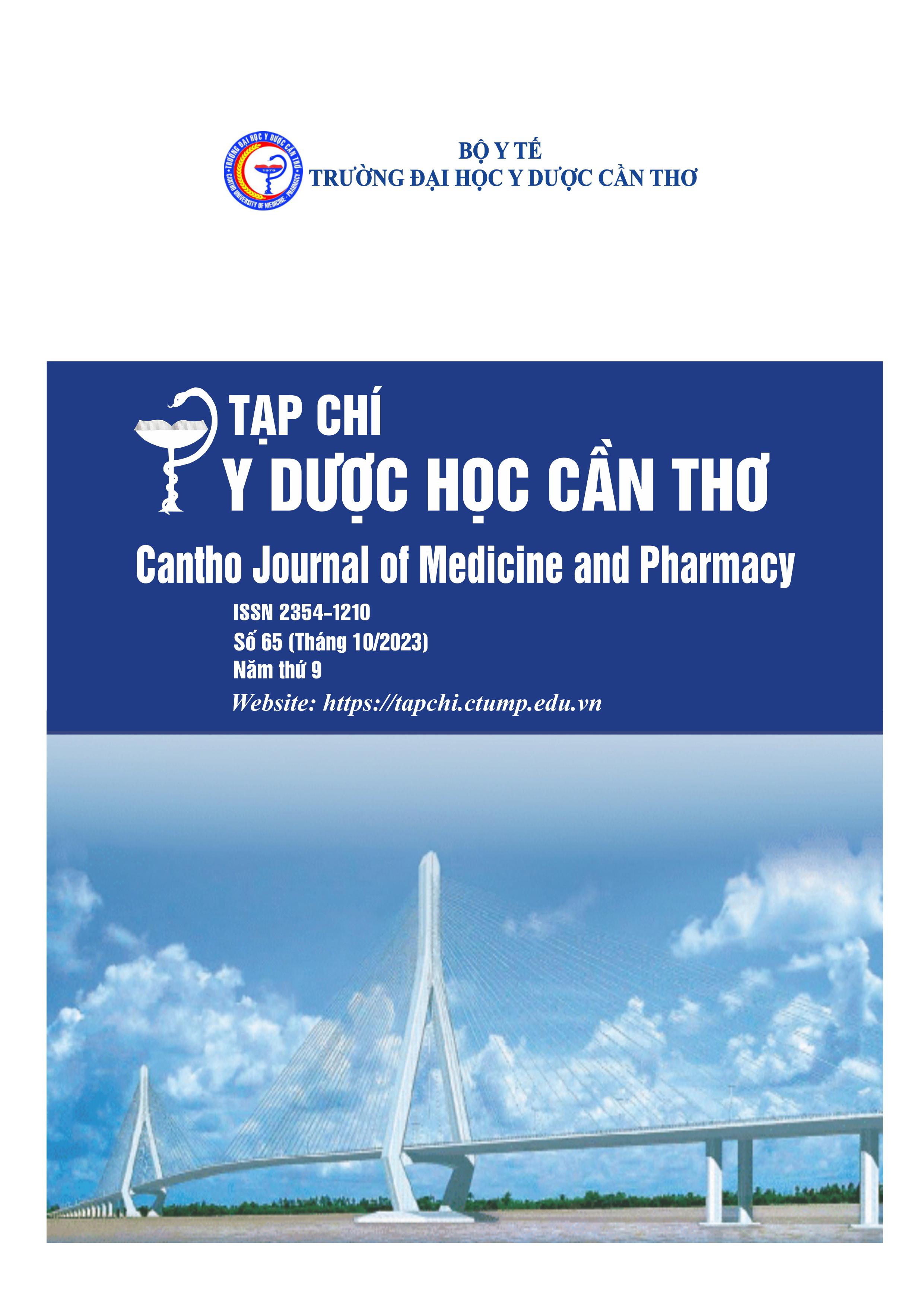CHRONIC ENERGY DEFICIENCY AND ASSOCIATED FACTORS AMONG NURSING STUDENTS AT DONG A UNIVERSITY IN 2023
Main Article Content
Abstract
Background: Chronic energy deficiency dramatically affects the appearance and health of students, such as reduced immunity, increased risk of infectious diseases, ... Objectives: To describe chronic energy deficiency status among nursing students at Dong A University in 2023 and identify related factors to chronic energy deficiency among nursing students. Materials and methods: A cross-sectional study was conducted on 372 nursing students at Dong A University from October 2022 to April 2023. Chronic energy deficiency is measured using body mass index and is based on World Health Organization standards by age. Results: The prevalence of nursing students with chronic energy deficiency in both genders is 22.3%; in which male students account for 4.8% and female students account for 95,2%. The factors related to chronic energy deficiency in nursing students (p <0.05) were age group, first/second/third/fourth-year students, deworming status within the past six months, satisfaction with current weight and height, self-assessment of current nutritional status, and exercise. Conclusions: The rate of chronic energy deficiency among nursing students at Dong A University is high, in which female students account for a higher rate than male students. Therefore, the school needs to periodically monitor the status of chronic energy deficiency. Students need to be dewormed periodically, have proper awareness of their own weight, height, and nutritional status, and regularly exercise with sports and intensity appropriate to their health.
Article Details
Keywords
Chronic energy deficiency, students, nursing, Malnutrition
References
2. Makkawy E, Alrakha A.M., Al-Mubarak A.F., Alotaibi H.T., Alotaibi N.T., et al. Prevalence of overweight and obesity and their associated factors among health sciences college students, Saudi Arabia. J Family Med Prim Care. 2021. 10(2), 961-967, DOI: 10.4103/jfmpc.jfmpc_1749_20.
3. Hoàng Thị Linh Ngọc, Nguyễn Thị Thanh Hòa, Lê Thị Hương. Tình trạng dinh dưỡng và một số yếu tố liên quan của sinh viên Y1 trường Đại học Y Hà Nội. Tạp chí Nghiên cứu y học. 2021. 146(10), 192-197, https://doi.org/10.52852/tcncyh.v146i10.335.
4. Trương Hoàng Ngọc Quý, Lê Nguyễn Minh Khoa, Trần Cao Anh Khôi, Nguyễn Quang Minh Hiển, Võ Việt Thắng và cộng sự. Nghiên cứu đặc điểm nhân trắc học và tình hình dinh dưỡng của sinh viên khóa 26 Đại học Duy Tân. Tạp chí Nội tiết và Đái tháo đường. 2021. (49), 104109, DOI: 10.47122/vjde.2021.49.14.
5. Vũ Thị Nhung. Tình trạng dinh dưỡng và một số chỉ số sinh học của sinh viên đại học chính quy năm thứ 2 trường Đại học Điều dưỡng Nam Định. Tạp chí Y học Việt Nam. 2022. 516(1), 106110, https://doi.org/10.51298/vmj.v516i1.2963.
6. Trường Đại học Y khoa Phạm Ngọc Thạch. Dinh dưỡng học (Tái bản lần thứ 4 – Có chỉnh sửa và bổ sung). Nhà xuất bản Y học. 2020. 7. Trường Đại học Y tế công cộng. Dinh dưỡng cộng đồng và an toàn thực phẩm (Tài liệu giảng dạy cho cao học Y tế công cộng). 2014. 8. Viện Dinh dưỡng Quốc gia. Các phương pháp đánh giá và theo dõi tình trạng dinh dưỡng. https://viendinhduong.vn/FileUpload/Documents/SGKDD_P2.pdf.
9. Nguyễn Thị Thu Hiền, Nguyễn Bạch Ngọc, Nguyễn Thị Huyền Trang, Hà Minh Trang. Thực trạng thừa cân béo phì của sinh viên Đại học Xây dựng và một số yếu tố liên quan. Tạp chí Y tế Công Cộng. 2021. (54), 53-61.
10. Trường Đại học Y Hà Nội. Ký sinh trùng y học. Nhà xuất bản Y học. 2020.


